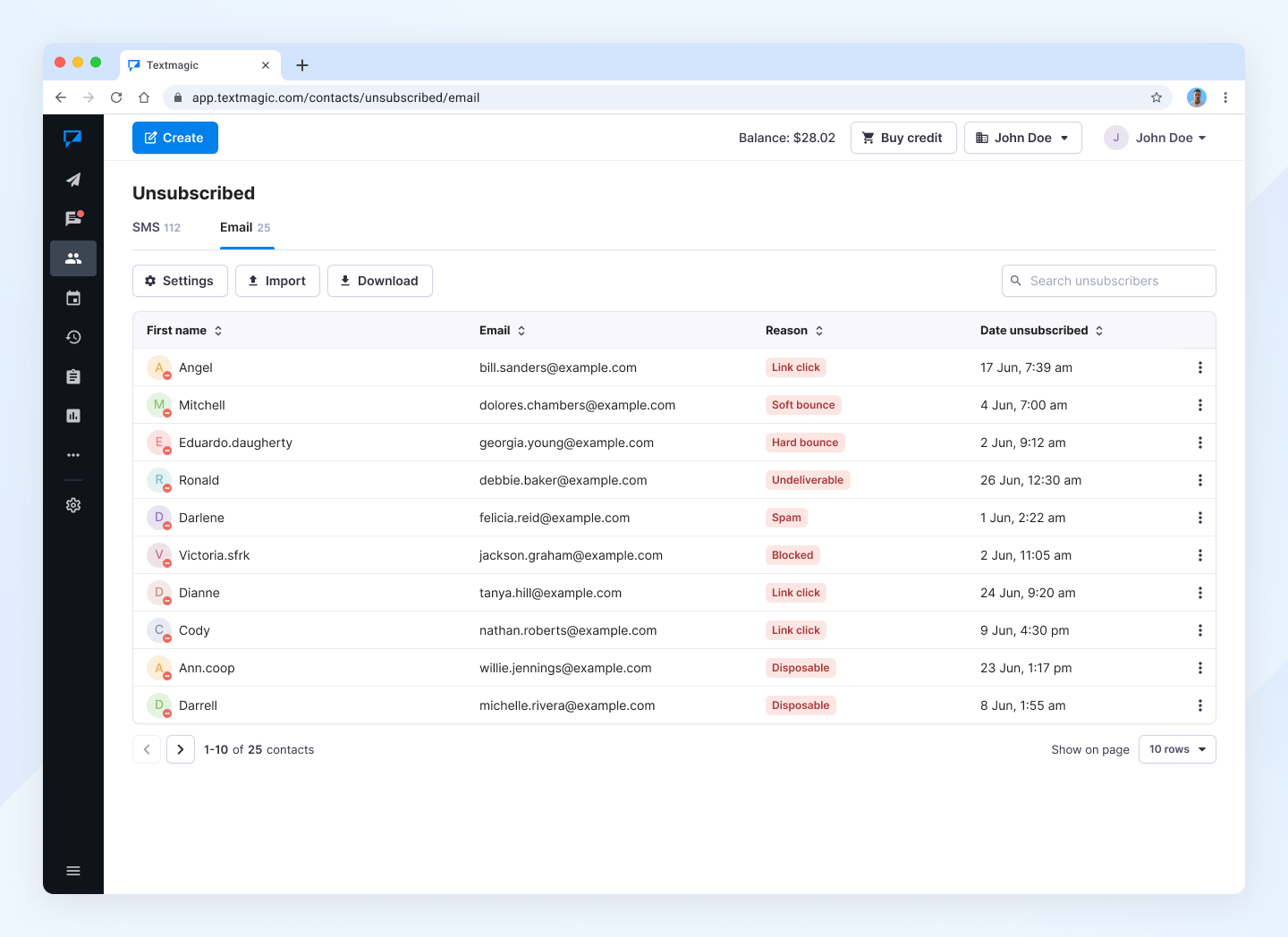Email bounces: why they happen and how to handle
Email bounces occur when your message cannot be delivered to the recipient’s inbox. Knowing why they occur and how to handle them helps keep your sender reputation strong and improves email delivery.
In the Textmagic app, all bounces are shown with the status “bounced,” but we still treat them differently behind the scenes:
- Hard bounces: Permanent failures (e.g. invalid address). No retry.
- Soft bounces: Temporary failures (e.g. full mailbox). We retry sending automatically.
Hard bounce
Hard bounces are permanent delivery failures. Common reasons include:
- The email address doesn’t exist
- The domain is invalid
- The recipient server has blocked delivery permanently
Note: Textmagic will automatically remove invalid emails from your contacts after the hard bounce to prevent further delivery issues and damage to your domain reputation.
Soft bounce
A soft bounce means the email couldn’t be delivered due to a temporary issue. These include:
- The recipient’s inbox is full
- Their mail server is down or unresponsive
- The message size exceeds the recipient’s server limit
- The recipient server has rate-limiting policies
How Textmagic handles soft bounces:
- Textmagic retries sending the email automatically, using a back-off strategy
- If the message continues to bounce over multiple attempts (typically 3–5 times, depending on the nature of the bounce), it will be marked as bounced
- Persistent soft bounces may eventually be treated as hard bounces, depending on the pattern
Best practices to reduce bounces
- Get familiar with best practices for sending email campaigns
- Learn how to ensure email delivery with a strong domain reputation
- Always use confirmed opt-in (double opt-in) methods
- Regularly clean your contact lists and remove inactive addresses
- Avoid purchased or scraped email lists
- Monitor bounce, unsubscribed and spam rates in the campaign results
- Test your emails using deliverability tools to avoid spam triggers
